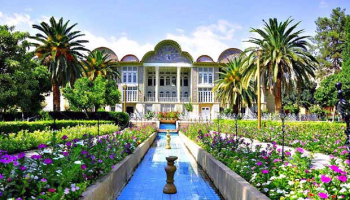Persepolis
Introduction and Pictures
The Historical Marvel of Persepolis: Exploring the Wonders of Persepolis
Persepolis, the magnificent ancient city of Persia, stands as a testament to the grandeur and sophistication of the Achaemenid Empire. Located in the heart of modern-day Iran, Persepolis, also known as Takht-e Jamshid, is an archaeological marvel that echoes the voices of a bygone era. This sprawling complex, with its impressive structures and intricate carvings, offers a glimpse into the political, cultural, and artistic achievements of the Persian civilization. This essay will delve into the historical significance of Persepolis, examining its construction, geographical location, and various other facets that contribute to its allure as a premier tourist attraction.
Persepolis was built during the reign of Darius the Great, around 518 BCE, and continued to be expanded upon by subsequent kings, including Xerxes I and Artaxerxes I. The city served as the ceremonial capital of the Achaemenid Empire, hosting grand celebrations and royal gatherings. The construction of Persepolis spanned over several decades, with skilled artisans and laborers working tirelessly to create a city that would symbolize the might and splendor of the Persian Empire.
Geographically, Persepolis is strategically situated at the foot of the Kuh-e Rahmat (Mountain of Mercy) in the Fars province of Iran. This location was chosen not only for its natural beauty but also for its symbolic significance. The surrounding landscape, with its mountainous terrain, provided a natural defense for the city while allowing for a commanding view of the surrounding plains. The terraced construction of the city, with its series of monumental staircases and platforms, reflects a harmonious integration of architecture with the natural topography.
The main entrance to Persepolis is the grand staircase known as the “All Nations’ Gate.” This monumental entrance leads to the heart of the complex, where the Apadana Palace, the most significant and largest structure in Persepolis, stands. The Apadana served as the primary audience hall for the king, where delegations from various nations would present their tributes and pay homage to the Persian rulers.
The Persepolis complex is characterized by its impressive columns, each intricately adorned with capital sculptures depicting various animals. The Hall of a Hundred Columns, another prominent structure, showcases the engineering prowess of the ancient Persians. The intricate carvings on the staircases and walls narrate the story of Persian kings, their conquests, and their interactions with different cultures.
One of the most iconic features of Persepolis is the famous bas-relief carvings, which provide insights into the cultural and religious beliefs of the Achaemenid people. The depiction of royal guards, mythical creatures, and symbolic rituals on the walls of Persepolis is a testament to the rich artistic heritage of ancient Persia.
Despite its grandeur, Persepolis faced a tragic fate. The city was plundered and set ablaze by Alexander the Great in 330 BCE, leaving behind ruins that tell a story of both triumph and tragedy. However, the remnants of Persepolis continue to captivate visitors from around the world, offering a tangible connection to the ancient world and inviting contemplation on the rise and fall of empires.
In conclusion, Persepolis stands as an enduring symbol of the Achaemenid Empire’s glory, a marvel of ancient architecture, and a treasure trove of historical and cultural significance. Its construction, strategic location, and the intricate details of its structures make it a premier archaeological site that attracts tourists, historians, and archaeologists alike. Persepolis remains a timeless testament to the ingenuity and achievements of the Persian civilization, inviting modern-day travelers to step back in time and witness the splendor of an empire that once ruled over vast territories.

